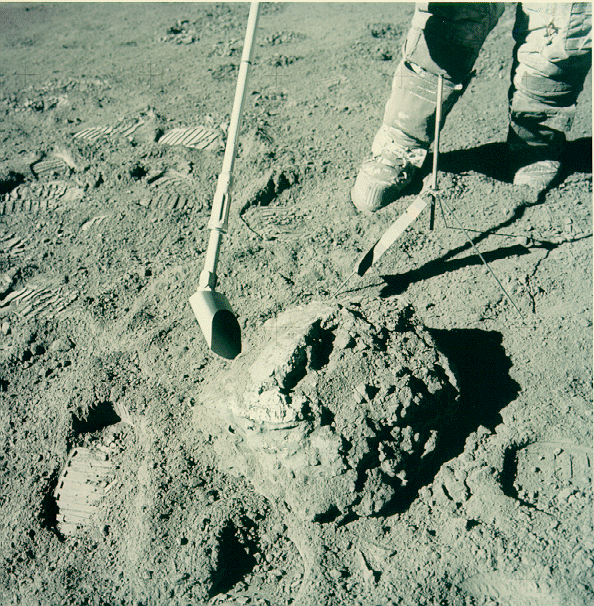According to the U.S. National Academies of Sciences, Engineering, and Medicine, men should drink 3.7litres of water a day and women 2.7litres. Now imagine a crew of three heading to the Moon for a 3 week trip, that’s something of the order of 189 litres of water, that’s about 189 kilograms! Assuming you have to carry all the water rather than recycle some of it longer trips into space with more people are going to be logistically challenging for water carriage alone. Researchers from the U.S. Naval Research Laboratory (NRL) have discovered lunar rocks with hydrogen in them which, when combined with lunar oxygen provide a possibly supply for future explorers.
A total of 382 kilograms of rock was brought back from the Moon by the Apollo program (I weigh about 80kg so that’s almost five of me in weight – and its all muscle I promise!) Some of the samples were immediately studied while others were sealed for future research hoping that future instrumentation would be more sensitive.
A research team from NRL, led by Katherine D. Burgess and team members Brittany A. Cymes and Rhonda M. Stroud, have recently announced their findings whilst studying some of the lunar rock. They wanted to understand the source of water on the Moon and to understand its formation. Future lunar exploration especially permanent lunar bases will rely heavily upon existing lunar resources. The paper articulates “Effective use of the resource depends on developing an understanding of where and how within the regolith the water is formed and retained”.

Transmission electron microscopy was used as part of the study to explore lunar sample 79221. The technique utilises a particle beam of electrons to visualise specimens and generate a highly magnified image. In particular, the team looked at grains of the minerals apatite and merrillite and discovered signs of ‘space’ weathering due to the solar wind. The solar wind is a stream of charged particles that rush outward from the Sun at speeds of up to 1.6 million km per hour!
They found hydrogen signatures in samples in vesicles – small holes left behind after lava cools. The discovery confirms that solar wind is being trapped in detectable quantities proving a potential reservoir that could be accessible to future explorers.
Hydrogen itself is a tremendously useful resource and if that can be mined from the lunar surface material it can aide many aspects of exploration. The real buzz around the discovery is that it may finally resolve the mystery about the origins of lunar water and that it might well be the result of chemical interactions between the solar wind and lunar rocks. If we can understand the origins of the lunar water – and we may finally be close to that now – then we can be sure we use it effectively to reach out further into the Solar System.
Source : Hydrogen detected in lunar samples, points to resource availability for space exploration

